This project is an attempt to stitch all the Drag-on Dragoon and NieR games, and their surrounding novellas, stage plays, concert dramas, lore books, and so on, and so on, into one full, cohesive story. I began in 2018, abandoned the effort for two years, and then came back to it. You may want to read previous articles on DoD3 and DoD1.
The vast majority of NieR content has never been officially translated, which is unfortunate because the game leaves out a lot of key plot information covered in books like Grimoire NieR. However, fans have done an incredible job making up for the lack, and there are only a few significant gaps.
The illustrations in this article are official art, from Grimoire NieR via the Nier wiki. The main character designer for the game is known as D.K. and I suspect he’s the artist for most or all of these images, but I can’t confirm!
Drag-on Dragoon 3, 2013 and Drag-on Dragoon/Drakengard, 2003
We have covered the plot of Drag-on Dragoon 3 and Drag-on Dragoon in a whole lot of detail, but let’s quickly recap.
DoD recaps
It begins in 853 AD, in an alternate timeline. A modern city suddenly manifests in Spain, bringing with it magical creatures such as dragons. The city becomes known as the Cathedral City, and world history is irrevocably transformed.
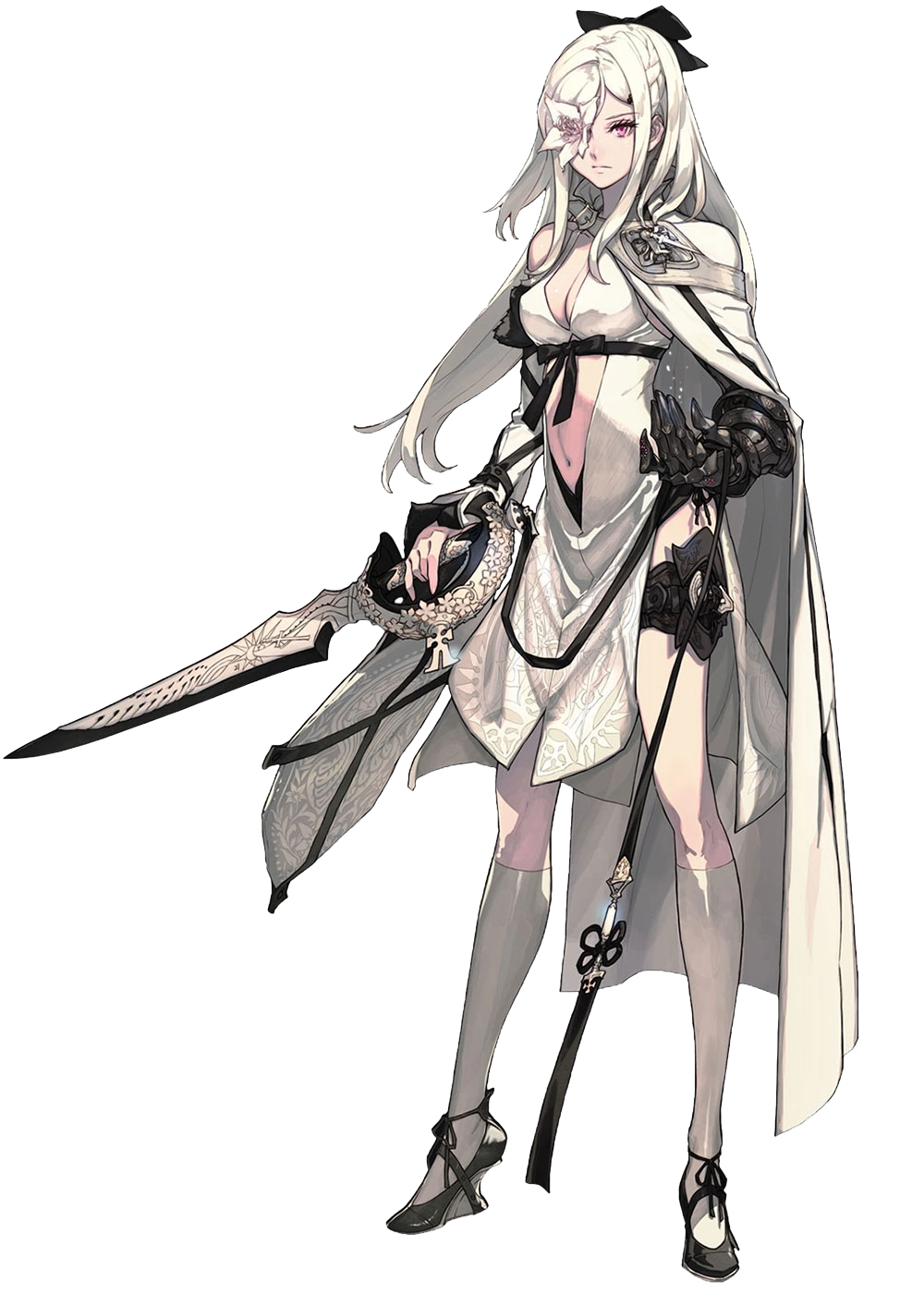
Around 1000 AD, the magical feudal order is overthrown by five magical sisters known as the Intoners, who can summon powerful beings called Angels. These five sisters spawned from a woman known as Zero, who became infected with a parasitic magical Flower which wants to end the world. When she attempted suicide, the five sisters manifested as a defence mechanism.
Zero allies with a dragon called Michael, and goes on a campaign to eradicate her five sisters. Her first attempt fails, and Michael is reincarnated as an infant dragon, Mikhail. From then on, the timeline splits into at least five branches, with different outcomes.
One, the leader of the Intoners, created a clone who she calls her brother. In the branch that leads to NieR, Zero kills her sisters, but Mikhail is fatally injured. To save him, Zero uses the Flower’s power to create a magical form called a Pact, which links the souls of a human and a magical creature, granting great power at deep personal cost to the human. However, moments later, One’s brother kills Zero, which also causes Mikhail to die.
As the sole survivor, One’s brother founds a new Church of the Angels, which worships Intoners and the Angels they summon. The Church creates a ‘Seal System’ designed to contain all the apocalyptic badness threatening the world, anchored in the person of a Goddess. However, before long, One’s brother is deposed and exiled.
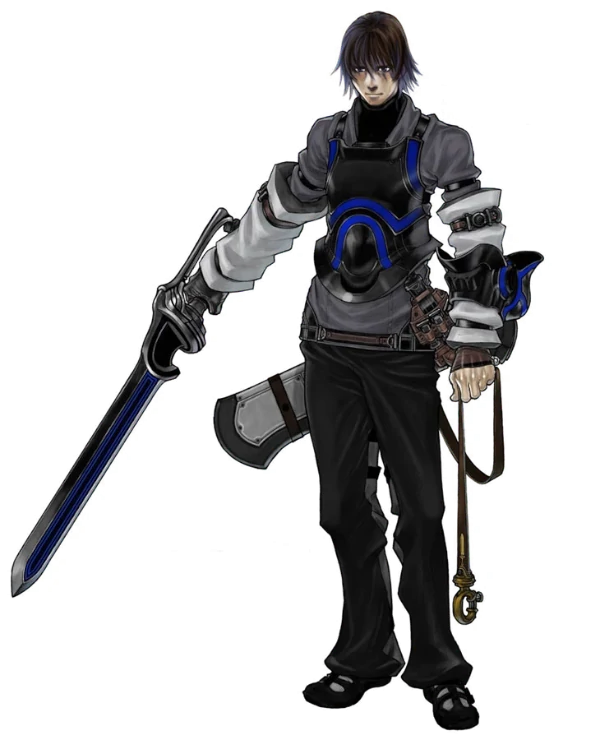
Over the next hundred years, the unconscious malevolent influence of One’s brother leads to the appearance of a ‘Red Eye’ disease among the followers of the Church, which gives people supernatural strength and an inclination to violence. The Red Eye-infected form a large Empire, and the remaining nations ally against it in a Union. Within the Union is an orphan prince named Caim, driven by fierce hatred of the Empire.
At a fateful moment, Caim forms a Pact with a dragon named Angelus, linking their souls and giving him the power to slaughter thousands of the Empire’s soldiers and turn the war around. But this is not enough. The Seal system, anchored in Caim’s sister Furiae, is broken, leading to a variety of apocalyptic scenarios.
In the branch we’re interested in, angels descend to Earth in the form of giant flying babies, which soon set about devouring everybody in the Cathedral City. They are led by a gigantic, statue-like woman called the Mother Angel, whose power over ‘Great Time’ threatens to destory the world altogether.
In the most inaccessible ending, originally a joke, Caim and Angelus dive towards the Mother Angel. Unexpectedly, the three fall out of a portal in the sky in Shinjuku, Tokyo in the year 2003, in a world which has until then followed history just like our own. There, the Mother Angel attempts to destroy the world with rings of magic, which Angelus answers with her own rings in an unforgiving rhythm game. Ultimately, the Mother Angel collapses—but moments later, Caim and Angelus are shot down by JSDF jets, and Angelus is left impaled on Tokyo Tower.
It is this ending that leads to NieR.
Grimoire NieR timeline, 2010 (fan translation)
So what comes next? Some of this is revealed in NieR, but it’s brought together and a lot of missing details filled in with a companion book called Grimoire NieR.
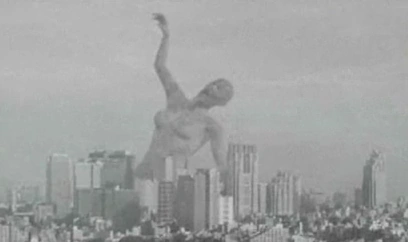
The defeated Mother Angel, aka the Giant, looms over Tokyo at the end of Drag-on Dragoon.
Later that year, people start being afflicted by a deadly illness that does one of two things: turns them into salt (fatally!), or makes them go berserk. It is later dubbed White Chlorination Syndrome. The infections are most common in the Shinjuku region of Tokyo, where the Mother Angel (now known as the Giant) and Angelus (the Dragon) first appeared.
(Per Yoko Taro’s interview in Grimoire NieR, what’s really happening is that the magic particle released by the Giant forces people into pacts with God. If they refuse: turn into salt. If they accept: become a monster, bound to ‘destroy the world according to its will’. Thanks, God.)

Concept art for NieR depicting Tokyo covered in salt, formerly the bodies of people inflicted with the White Chlorination Syndrome. (full size)
Attacks by infected people escalate in Shinjuku, and in October 2004, an enormous wall named after the Wall of Jericho is constructed to seal off Shinjuku. The Japanese government continues to violently suppress the ‘berserkers’. Soon, all contact from inside Shinjuku is lost.
In 2008, the wall of Jericho is broken from inside by white monsters that get called the Legion, with magical effects very similar to the shit that went down when Caim and Angelus arrived on Earth (this event is mentioned briefly in one of the loading screens in NieR). Led by a being called ‘Red Eyes’, the Legion overwhelms the JSDF and spreads White Chlorination across Japan…
(In various places in NieR Automata, such as the abandoned factory, we read snippets about the war against the Legion. Apparently they created humanoid weapon systems to fight the Legion, and worked the factory workers ‘like machines’. This is therefore the origin of the robotic weapons in the military base in NieR.)
In 2009, the Japanese government forms an alliance with the USA. Not long after, they decide to try to destroy the Legion by carpet bombing it… and when that doesn’t work, they nuke it on the anniversary of the Hiroshima bombing. (Yoko Taro is sometimes… not subtle.) This is followed up by a series of further nuclear attacks, leaving Japan a ‘scorched earth’. But hey, at least the Legion’s gone!
Naturally, the Legion isn’t gone. White Chlorination Syndrome, and Legion attacks, spread across the world, starting in China.
In 2010, scientists figure out the ‘Dragon’ and ‘Giant’ are from a parallel world, and they brought with them magic in the form of the ‘maso’ particle (魔素, literally ‘witchcraft element’ or ‘demonic element’), which is the cause of WCS [story: Investigation Report]. And by nuking Japan, humanity just spread maso everywhere. Whoops.
Fortunately, discovering Maso lets humans do all sorts of new magic science! Yay! Unfortunately, someone steals the dragon. Boo! (This plot thread doesn’t ever seem to be followed up on, but it’s mentioned in the timeline.)
In March 2014, Project Gestalt begins (NieR Automata: Project Gestalt Report 1). Using the newly discovered magic, they figure out a way to separate souls from bodies, and put them back again. It does not catch on. Like, really does not catch on. Apparently, despite the apocalyptic war taking place, people still have time to protest Project Gestalt (NieR Automata: Project Gestalt Report 2).
A medicine called Luciferase (in reality, an enzyme that produces bioluminescence) is also discovered that’s somewhat effective against WCS - most effective in children. Armed with Luciferase, a special unit called the First Crusade (gotta throw in all the allusions!) forms to fight the Legion, but they’re ultimately defeated. Still, the method shows promise, so the ‘Hamelin Organisation’ is founded to turn children into soldiers to fight the Legion. (There’s a bit of a weird inconsistency, in that according to the NieR Drama CD, the Hamelin organisation apparently already existed when they carpet-bombed Shinjuku. But the timeline marks its founding here.)
In one of the stories (And Then There Are None, linked later), we learn that Luciferase - though presented as a cure - only delays the disease, so most of these kids die or turn on their comrades (a theme that will recur, much later, with the ‘logic virus’ and androids).

In 2018, wary of the Hamelin Organisation, the Japanese government founds the National Weapons Laboratory to create magic weapons based on people. This will eventually be used to create Experiments No. 6 and 7 from two kids: Halua and her brother Emil. Prior to Halua, a number of other kids die due to magic experimentation.
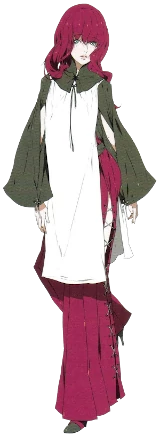
In 2025, they figure out the other half of Project Gestalt: creating ‘Replicants’ from the vacated bodies, empty vessels to deposit the Gestalt (soul) into after it’s separated from a body. (NieR Automata: Project Gestalt Report 3). Replicants are created from the Gestalt, but because the soul is separate, that somehow means they’re not susceptable to WCS (NieR: Project Gestalt Report 0923).
They also invent androids—most famously, Devola and Popola—and set them to oversee the Replicant System. In NieR Automata, it’s confirmed there are many clones of Devola and Popola, overseeing different settlements, but they’re not the only androids. We know of at least a ‘Celebrant Android’ whose job it is to get the Replicants to gather up maso and send it into another universe.
Basically, the plan is this: extract everyone’s souls from their bodies, put the souls to sleep, wait for WCS and the Legion to be destroyed by the Replicants and androids, and then put the souls back into their Replicants and carry on as once-again normal humans.
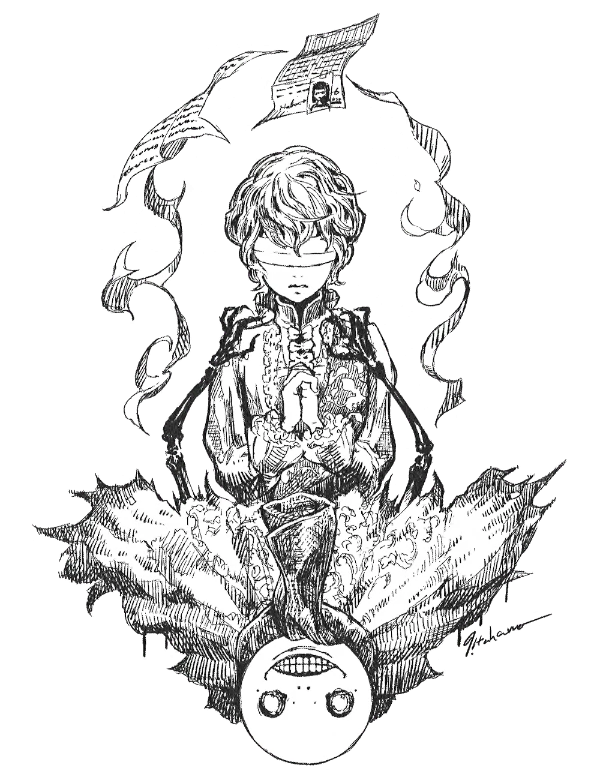
Meanwhile, in 2026, Halua—immediately after been turned into a huge skeletal monster with a giant spherical head and incredible magic powers—panics and destroys the National Weapons Lab, killing most of the scientists. As a response, Emil is hurriedly also enchanced, and given the power to turn people into stone with his eyesight. He is able to contain her. The lab is mostly shut down. [story: The Stone Flower] [NieR Automata: Project Gestalt Report 4]
In 2030, ‘Red Eye’ is finally defeated by the 13th Crusade, members of the Hamelin organisation. The battle takes place in Jerusalem, and afterwards, the city is placed off-limits. A woman named Kaali is Vice-Captain of the squad that defeats Red Eye, and since the original captain died in the battle, she is treated as a hero. Although Red-Eye is finally defeated and the Legion is no longer an organised threat, WCS continues to spread. [Kaali’s role is discussed in the NieR Drama CD; she becomes a major backer of the National Weapons Laboratory by 2050.]
Using the genes of Kaali, her unnamed husband, and a ‘combined analysis of the Legion’s attack patterns’, a ‘program baby’ called Kainé was created. Since the Legion has been defeated, Kaali, guilty for what she’s done, ‘seals’ Kainé’s ‘offensive form’, and raises Kainé as a granddaughter.
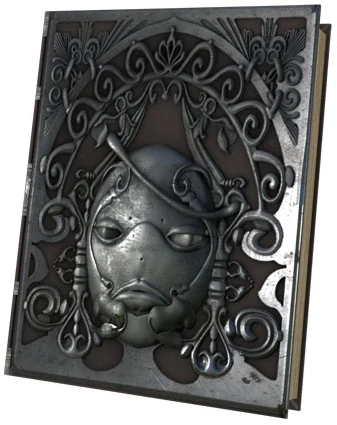
In 2033, the Project Gestalt people figure out a way to bind Gestalts into books and use them to do powerful magic - in particular, to use Grimoire Noir and Grimoire Weiss together to force loads of Gestalts into their Replicants at once. So the plan now is: wait for the Replicants to deal with the whole WCS thing and ‘purify’ the world of Maso, and then force everyone’s souls back into their bodies using the Grimoires. To make the Grimoires, they harvest a bunch of kids in the Hamelin Organisation [story: And Then There Were None]. [NieR: Automata: Project Gestalt Report 5]
(Later, in NieR, we encounter Grimoires Noir, Weiss and Rubrum, though the latter doesn’t speak.)
The two versions of NieR
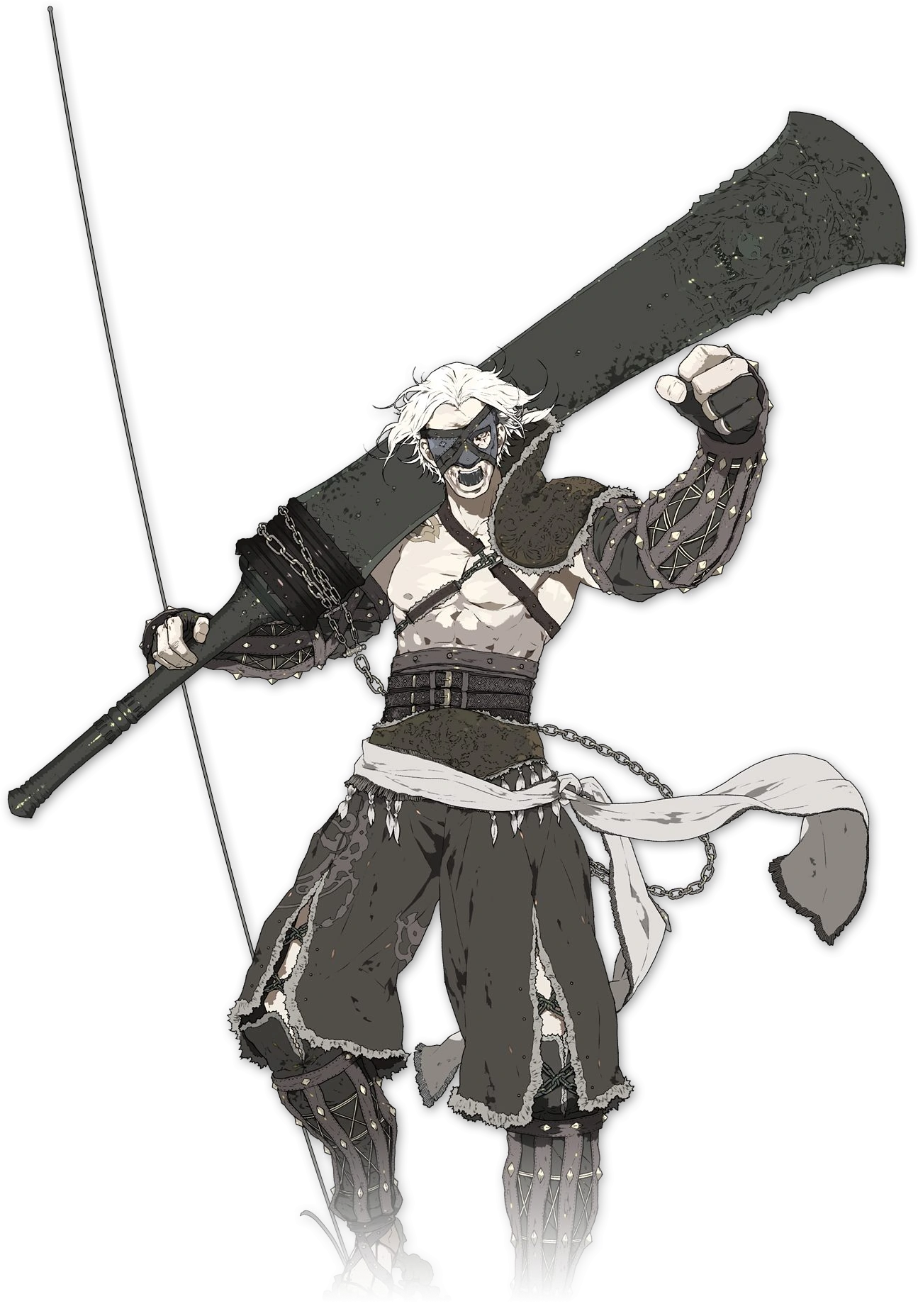
Around this time, we introduce Nier, the protagonist of NieR. In one version, he’s a dad (‘Father Nier’) looking after his daughter; in the other, he’s a brother (‘Brother Nier’) looking after his sister.
Why are there two versions? The western publishers figured a father would play better in the west, but the devs originally conceived of the story with a brother. Eventually, they reached a compromise where the dad version was released on the XBox in Japan as NieR: Gestalt, and the brother version on the PS3 as NieR: RepliCant. Outside of Japan, the dad version was released on both consoles, simply titled NieR. The differences between the two versions are fairly minor, changing the tone of a few scenes but not the story overall. As of early 2020, a remake of RepliCant has been announced, which should see a wider release!
The timeline is slightly different depending on which version of the game you play. Yoko Taro explained in an interview that this is a hint towards a cyclic history with minor variations.
NieR RepliCant Drama CD disc 1 (translation)
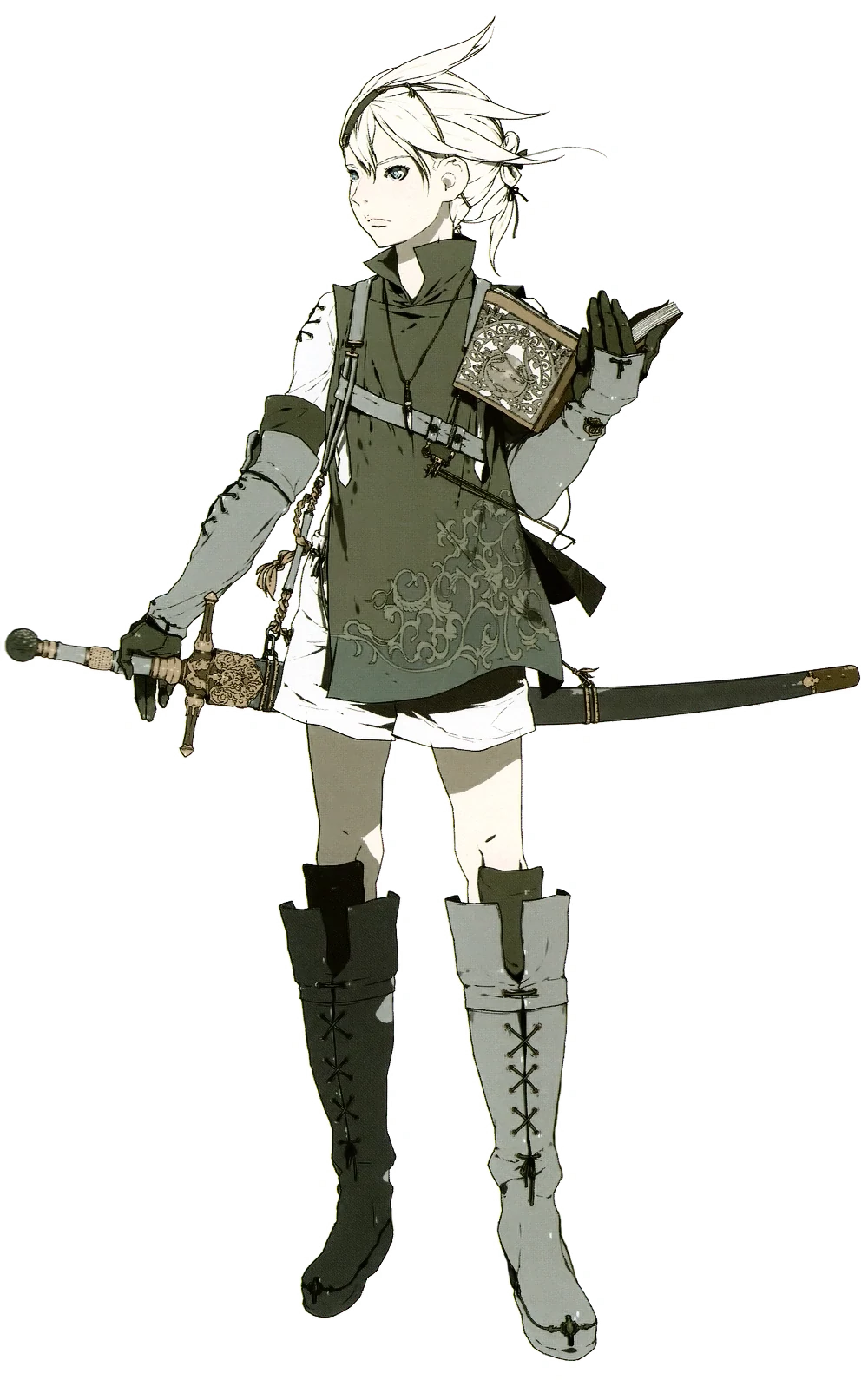
You can listen to the Drama CD here on Youtube, and follow along with the above translation by shirobooty. It’s based on RepliCant, so the Nier here is the brother.
In 2050, Nier and Yonah are burying their mother, who died of WCS. At this point, it is common for salt to rain from the sky like snow - the remnants of those who died of WCS.
Around the same time, the National Weapons Laboratory (which turned Emil and Halua into weapons) is transporting something called Specimen B, which turns out to be a giant Red Eye. Naturally, it breaks free, and starts terrorising the people as a new Legion forms. Nier and Yonah are at this point separated during the evacuation.
Not long after, a soldier called Masayoshi Yura seizes control of the National Weapons Laboratory in a violent coup. In the next track, it appears that this coup was orchestrated by Kaali. Kaali orders Yura, on pain of loss of funding, to guard her house; furious, Yura takes out his anger on the lab staff, and when Emil tries to stop him, reveals he has a weapon called the Bible (SS22) designed by the Hamelin Organisation, that’s selectively effective on people affected with maso—such as Emil. (An accompanying note raises a question: why is the Hamelin Organisation developing weapons against maso if the Legions are gone?). After threatening everyone, Yura heads to Kaali’s mansion.
At Kaali’s mansion, Yura sets up a weapon called the P-22. (The P-22, a ‘mobile weapons platform’, is also mentioned in NieR Automata: Abandoned Factory Memo. It is a precursor to the P-33 humanoid robots in the military base in NieR.) When the Red-Eye and Legion attack, he orders his soldiers to lure it to the mansion, and sets the P-22 on it. During the battle, Nier and Yonah encounter Kainé briefly.
The Red-Eye grows extra arms and overpowers P-22, so Kainé’s grandfather jumps in front of an attack to save Kaali. Yura brings out Emil and tears off his blindfold, causing him to petrify the soldiers fighting the Red-Eye. Emil, horrified by the collateral damage, tries to stop, so Yura drugs him, causing him to go out of control and wipe out the Legion and soldiers. Yura flees as opposing soldiers arrive to suppress his coup organisation. (A note reveals he evades capture long enough to become Tyrann in NieR.)
Kainé’s ‘offensive form’ is triggered by the events of the attack, and when Red-Eye absorbs her mother, she singlehandedly tears it open and then starts attacking everyone nearby. But Nier, still on the scene, is able to talk both Kainé and Emil down…
The events of the Drama CD are alluded to in NieR Automata in Project Gestalt Report 7.
Grimoire NieR timeline/backstory revealed in NieR
Of course, shit starts going wrong: after a while, the Gestalts start losing their self-awareness and going berserk - this is what “relapse” means (NieR: Project Gestalt Report 9182). Somehow, the scientists figure out that if they can make a “stable” Gestalt who doesn’t relapse, they can extract special “solid” maso that will keep all the other Gestalts from relapsing.
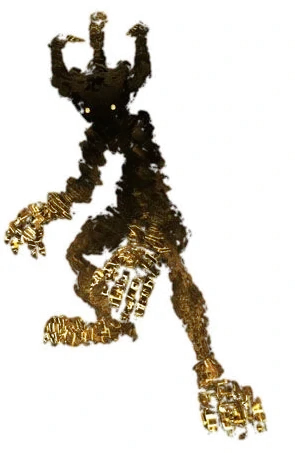
In NieR, the ‘Shades’ (マモノ, a katakana transliteration of 魔物, which means ‘demon’) that form the main enemies in the game are precisely these ‘relapsed’ Gestalts. However, not every Shade you encounter is relapsed. Gestalts who have not relapsed appear to be able to hold their human form, but let go of it in stressful situations, such as when you barge into their room and start killing them.
To try to produce such a stable Gestalt, the World Purification Organisation makes a bunch of clones of Grimoire Noir and hand them out to random poor people to Gestaltise themselves with, in the hopes that one of them will be suitable to stabilise the Replicant System. This is accomplished by announcing a ‘Salvation Support Plan’ in Japan, offering food and water to the many people displaced by the catastrophe.
NieR (2010), in Japan released as NieR: Gestalt and NieR: RepliCant
The game begins in 2049 (Father Nier) or 2053 (Brother Nier). Either way, Nier is one of the people given a clone of Grimoire Noir by the so-called Salvation Support Plan. At the start of the game, he ran away from the Gestalt project, and he and Yonah are starving and homeless, but he’s seen people turned into ‘black monsters’ by copies of Grimoire Nier [Grimoire NieR: the abyss of [Project NieR], vol. 1] [NieR: Iron Pipe weapon story].
In the game’s prologue, Nier and Yonah enter a ruined convenience store. Soon, they’re attacked by Shades (relapsed Gestalts), and, unable to defend himself and Yonah with his iron pipe, Nier finally resorts to opening his copy of Grimoire Noir. This forms a pact with it, with the cost being that he’s immediately Gestaltised. With the power of the book, he easily destroys the Shades… only to discover that Yonah has also opened her copy of the book, and is now afflicted by the ‘black scrawl’, causing shifting black characters in the Celestial Alphabet to appear on her skin.
This ‘black scrawl’ afflicts a Replicant when their Gestalt relapses. While Nier is, uniquely, a ‘stable’ Gestalt, Yonah’s Gestalt relapses almost immediately. At this point, the game skips forward a good 1300-1400 years.
The World Purification Organisation steps in, and offers to place Yonah in ‘stasis’, preventing the relapse from progressing further. In return, Nier must provide them with the maso they need to stabilise the Gestalts and ultimately return them all to their Replicants. (This is alluded to in NieR Automata in Project Gestalt Report 9). The WPO promises that in 1000 years, when the Gestalt project is finished, they will be able to cure Yonah; in fact they are lying, and do not think there is any way to save Yonah. Grimoire Noir refers to Gestalt!Nier as ‘my king’ (NieR Drama CD, Disc 2 track 1).
The game resumes in 3361 for Father Nier, and 3465 for Brother Nier. The intervening period is covered in the Grimoire NieR timeline…
The tidal lock
In the NieR game, and later NieR Automata, the game world is perpetually in daylight. This is not just a limitation of the engine, but a deliberate element of the setting: at some unknown point in the big time skip, the Earth became tidally locked to the sun, meaning one side—termed the ‘Kingdom of Day’—is in perpetual daylight, while the other side—termed the ‘Kingdom of Night’—is in perpetual night. All the games and stories so far released take place in the Kingdom of Day. However, word of Yoko Taro is that the Cathedral City, whose manifestation in the Drag-on Dragoon world kicked off the whole rolling catastrophe, comes from the Kingdom of Night. But this happens much later.
In the real world, a tidally locked planet would have devastating effects on the climate patterns, creating enormous wins radiating from the superheated daylight side and freezing the dark side. However, none of these effects seem to evident in the NieR world. In the absence of humans, the world once again becomes overgrown with plants as the traces of humanity fall into ruin. (Some of the stories and party dialogues seem to forget about the tidal lock altogether, so… don’t overthink it too much!)
Grimoire NieR
In 2764, the Replicants - supposed to be empty vessels awaiting a soul - start to develop sentience on their own. This is mentioned in NieR Automata in Project Gestalt Report 10. The Replicants form their own, new civilisations, such as the towns of Façade, Seafront and the Aerie.
The Replicants continue to clear the world of the White Chlorination Syndrome and maso particles. Things are going well enough until, in 3276, a young Replicant enters Jerusalem, where the 13th Crusade defeated the original Red Eyes and ended the Legion. He makes a wish for his dead lover to return… and she does, sort of, but only in the form of a new Red Eye, who kills him and begins a new Legion.
However, in 3287 this Legion is defeated by an android and four Replicants, and its maso expelled to another world. (This single-sentence summary was apparently intended to be developed into a full game, but Cavia folded before they could make it). At last, the world is ‘purified’ of WCS. It’s time for the Gestalts to start coming back to their Replicants, and this process begins the next year.
Unfortunately, the Replicants, now with independent minds, are freaked the fuck out by having their bodies taken over by mysterious forces. Apparently in some areas the androids are able to persuade the Replicants to accept the Gestalts, but in most areas, a war kicks off between the Replicants and the ‘Shades’. Despite the stabilising maso from Nier, some Gestalts begin to relapse, triggering the Black Scrawl in their corresponding Replicants.
The Gestalts figure their best shot is to use Grimoire Noir and Weiss together as planned, to cast all of them back into their corresponding Replicants at once.
Around this point, Gestalt Nier decides that a thousand years of providing maso is enough, the Hamelin Organisation was probably lying about helping Yonah, and he’s going to put her into her Replicant all by himself. Devola and Popola see an opportunity: they’ll help him acquire Grimoire Noir, and meanwhile get his Replicant to acquire Grimoire Weiss, and since Weiss is missing several crucial ‘sealed verses’, guide him to acquire them. Then, they’ll bring the two Grimoires together and bring all the Gestalts back to their Replicants.
Nier and Yonah, this time as Replicants
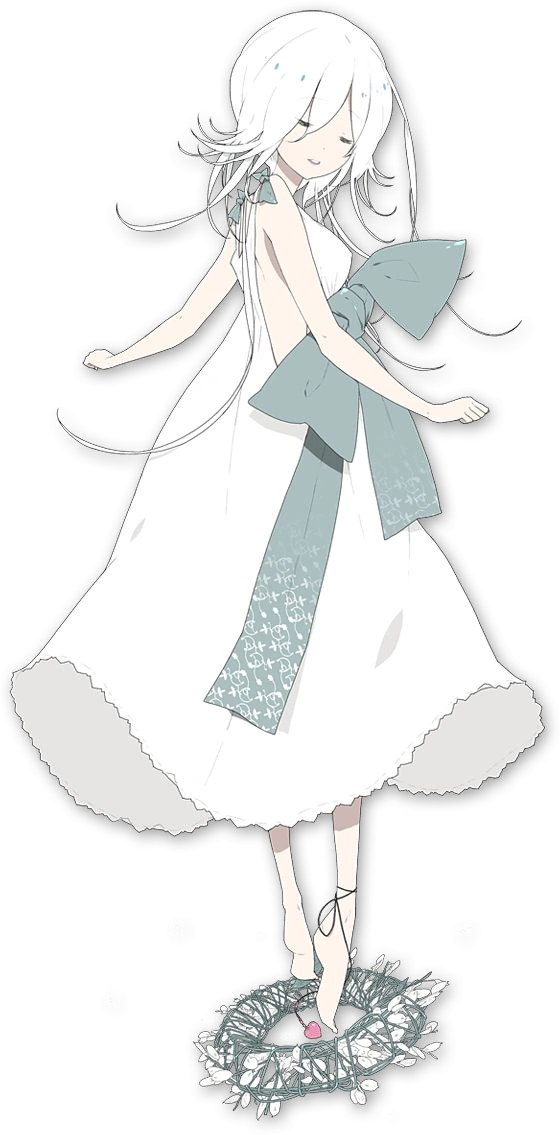
When NieR picks up, we are playing as a Replicant based on Nier. Nier is living in a small town in what used to be the Tokyo Bay area, overseen by the local instances of Devola and Popola. He works odd jobs for the townsfolk to care for Yonah, offered mostly out of sympathy.
At this point, the player has no reason to suspect Devola and Popola are seceretly androids. They come across as sympathetic, giving Nier helpful advice and support; Popola administrates the town from the library, while Devola sings at the fountain or hangs out at the bar.
Per an interview with Yoko Taro in Grimoire NieR, Devola and Popola oversee reproduction of the Replicants, who don’t have any grounds to find it strange:
Replicants don’t realize that they can’t have babies since they have no concept of what normal childbirth looks like. Basically, managers like Devola and Popola just call them to a place, say “You’re going to give birth soon”, and put them into sleep, then create a replicant from a test tube-like thing while they’re asleep. When replicants die, D&P just ‘recycle’ them into new bodies.
As the game starts, Yonah is sickly, and afflicted with the Black Scrawl (inevitably, since her Gestalt is permanently in half-relapsed stasis), and Nier looks for medicine to try and help her condition.
According to the Grimoire NieR story [content warning: child sexual abuse, underage sex work] The Red and the Black, Brother Nier and Yonah were once raised by a mother and distant father, although their biological mother probably did not undergo the Gestalt Process so I suspect it’s someone put in place as a surrogate mother by the Hamelin Organisation. Anyway, she died abruptly when they were ten - it turns out, of the Black Scrawl. In Gestalt, Father Nier lost his wife instead of his mother.
In the World of the Recycled Vessel DLC for NieR, we can read a cryptic diary by Nier’s mother or wife, loosely alluding to various events in the timeline.
By this point, the Black Scrawl is well known as an inexplicable but inevitably fatal disease; the connection between a Gestalt relapsing and the Black Scrawl is not known.
[content warning: child sexual abuse, underage sex work] Per the above story, when Yonah developed the Black Scrawl, Brother Nier was unable to afford her pain medicine, and resorted to sex work in order to afford it. This lasted until he was able to find work killing Shades.
Fyra’s backstory (A Little Princess)
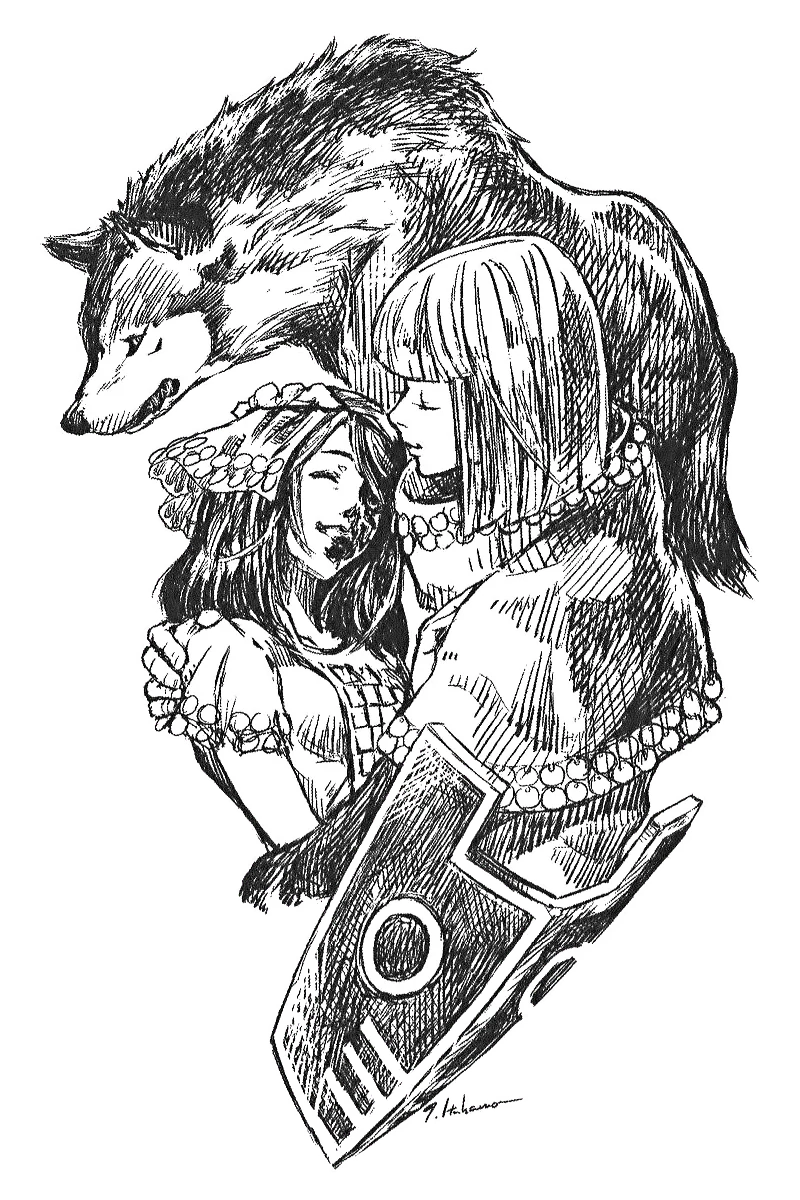
Fyra (フィーア Fīa; sometimes translated Vier) is a character you meet in the town of Façade in NieR. In the story A Little Princess we learn a little more about her life before we meet her.
She was born to some snobby merchants outside of Façade, who coldly rejected her due to keloids on her face and kicked her out at age 8. She ended up travelling to Façade. As we learn in NieR, Façade is a city with thousands of rules, where all the citizens wear masks. The Prince of Façade takes a liking to her, and arranges for her to get a job as a fruit seller. Until she marries and gains citizenship, she is not allowed to speak. Nevertheless, the Prince helps her out of various scrapes. When she learns of his identity, she becomes convinced that the prince has just been toying with her, but he apologises and they make up.
At some point prior to the game, Kainé rescues Fyra from some situation, earning the gratitude of the people of Façade.
Backstory of Jakob (EN)/Jiminy (JP) and Gideon, the kids at the junk heap (The Magic Mountain)
A woman named Blue raises two children neglectfully and abusively near the ruins of a military base, scavenging inside for materials. Shortly before the start of the game, she runs away with a man named Carlo, but they’re both killed by the base’s defense system.
The story The Magic Mountain describes what Jakob and Gideon go through after their mother abandons them. They run out of materials to sell; Gideon tries to go to the mountain, and Jakob tries to protect him and make him stop. Both of them act out trauma in various ways. The story ends when Nier and Grimoire Weiss arrive at the shop, unknowingly saving the kids from starvation.
NieR
Kainé’s backstory
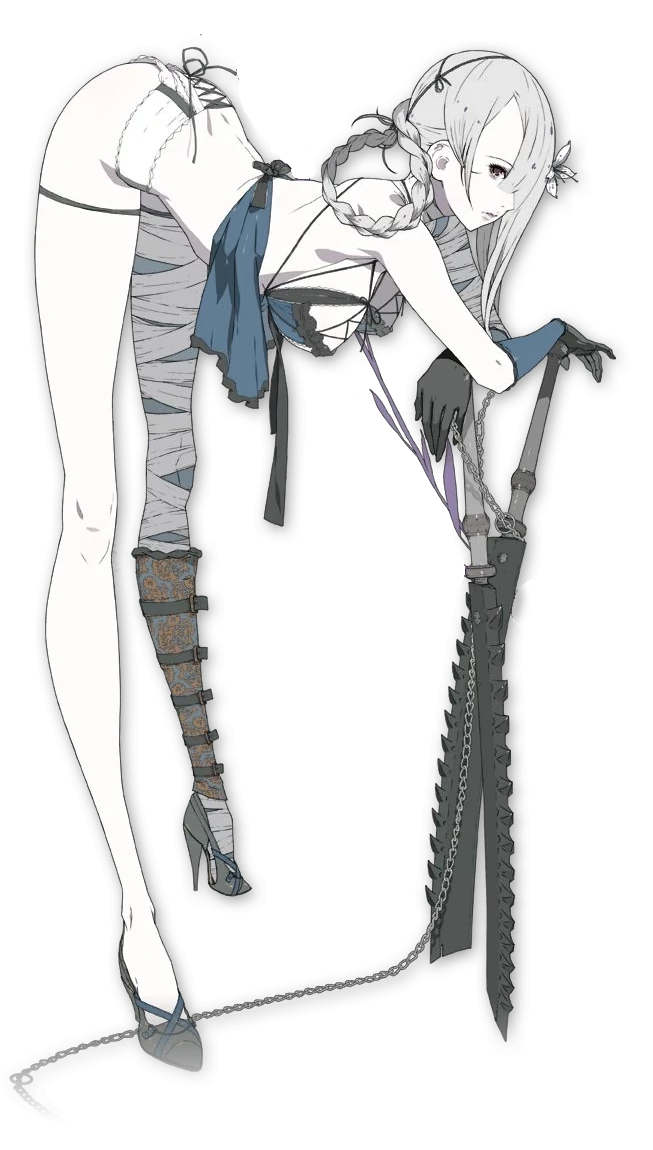
After reaching ending A of NieR, your next playthrough begins with a visual novel section revealing Kainé’s story as a replicant.
Unlike her original, the Replicant of Kainé is an intersex trans woman. This is never stated outright in the game, either the original or the localisation, but discussed in Grimoire NieR.
As a child, Kainé is brutally bullied by children in the Aerie, especially one child named Dimo, with tacit support of the adults. Her only support comes from her grandmother, the Replicant version of Kaali. Although often quick-tempered, Kaali cares for Kainé as nobody else will, and Kainé loves her fiercely. The two live in a metal shack on the outskirts of the Aerie (a town made of bridges and hanging buildings inside a giant ravine). However, as Kaali gets older, she starts to fall ill, and Kainé takes over more of the household tasks, risking going out into the world again.
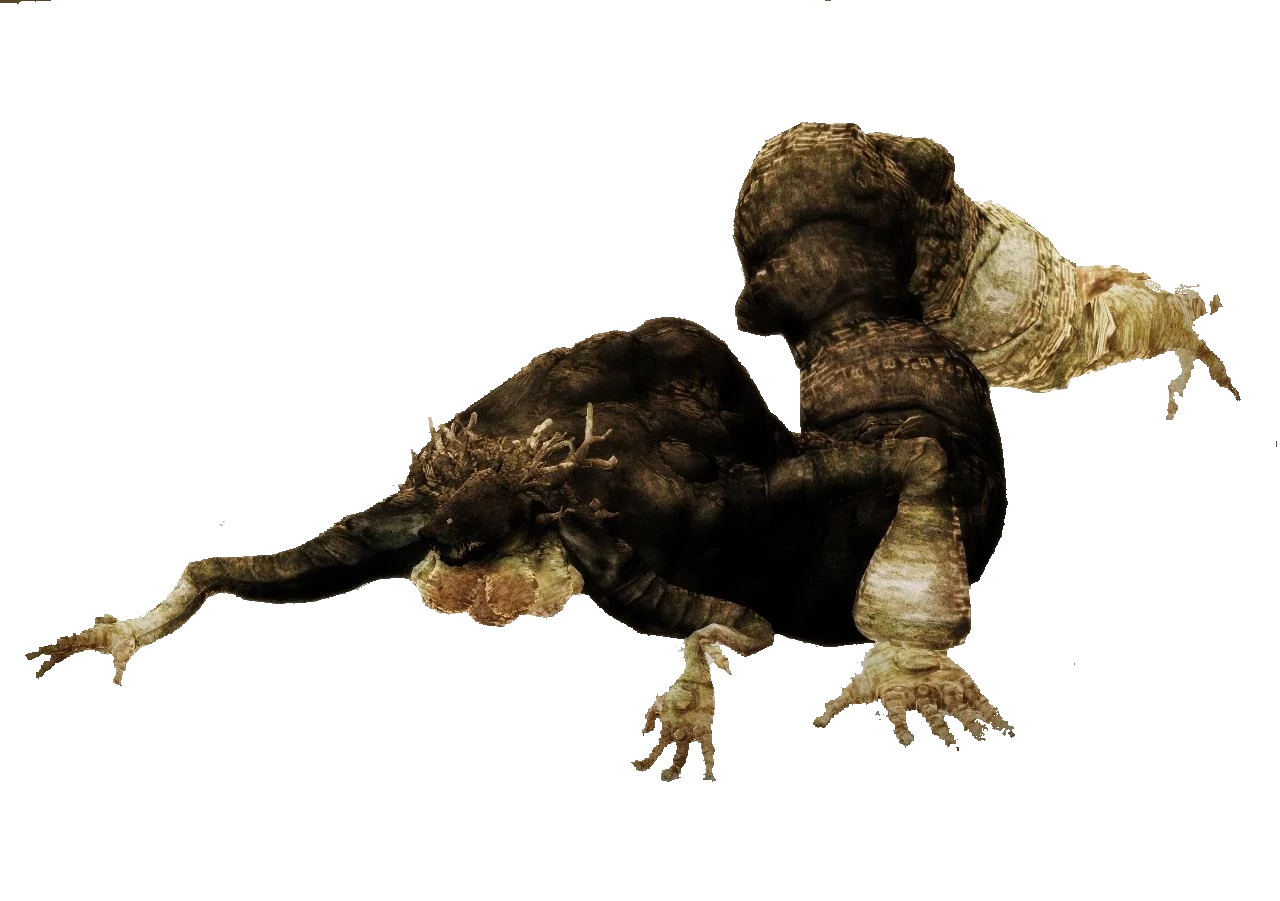
It ends tragically. A giant, powerful Shade (named Hook in Grimoire NieR), an aggregation of multiple Gestalts with a sadistic streak, attacks Kainé’s hut. It tortures then kills Kaali in front of Kainé; Kainé severely injures herself trying to drive it away, and is left dismembered with most of her bones broken, bleeding to death and hallucinating.
At that point, she’s approached by Tyrann, the assumed name of Masayoshi Yura, who has spent the years since we saw him borrowing Replicants here and there after his own was destroyed by the Hamelin Organisation (per notes of NieR Drama CD.) Tyrann taunts her, and asks to have her body—in order to go on a bloody rampage. In making this offer, he restores parts of her body, and Kainé finds the determination to live on, if only to get revenge on the Shade that killed her grandmother…
Tyrann enters a symbiotic relationship, taking the place of her left arm and feeding on her emotions—particularly, hate and anger—but in return granting Kainé a lot of deadly magic. This closely resembles a pact in the Drakengard sense, but it’s not so formalised. There’s also a danger: if Kainé doesn’t give Tyrann the hateful emotions he wants, he threatens to take over her body entirely.
I don’t think we get a precise timeline for how long it is between Kainé’s possession and her first encounter with Nier and Grimoire Weiss. In the meantime, she gets a reputation in the Aerie as a monster who gets off on killing Shades. In the story [content warning: anti-intersex bigotry/transmisogyny] Witches’ Sabbath, we get a first-person account of a creepy and hypocritical priest who lectures others on love and tolerance, and manages to accept that Kainé is possessed by a Shade, but just cannot handle the fact she has a dick (and does, in fact, get turned on by killing Shades—much to her own shame and discomfort, especially when she is observed. I love Kainé and my reaction to this was originally kind of ‘aw fuck yes’, but thinking about it more it’s kinda… fooof.)
Emil
After the events described above, Emil remains in a mansion built up top of the defunct National Weapons Laboratory, protected by a very stiff butler called Sebastian (who is apparently not human and does not age, not that we know much else about him). There are numerous Shades in the mansion, as well as Grimoire Rubrum, who is guarding a library with information on various kinds of magic. Halua remains locked in a large cylindrical room in the depths of the National Weapons Laboratory. (The mansion is heavily based on the Resident Evil series).
Nier and Grimoire Weiss
Early on in NieR, Replicant!Nier is continuing to look after Yonah by doing odd jobs - particularly, those involving violence - for the townsfolk. One night, Nier tells Yonah the story of a flower called the Lunar Tear that can grant wishes and cure her disease. Yonah gets the idea to ask Popola where this flower may be found, and learning that it’s in an old shrine (in fact, a large temple complex), goes to find one. Nier rushes after her. Knowing what we do about Popola, we can probably conclude that she was deliberately leading Nier to the temple so that he could find Grimoire Weiss.
There’s an easily missed detail here: at this point in the game, only some of the Shades are hostile. In particular, the very first shades you meet as Replicant Nier do not attack unless you attack them first. Even in the Lost Shrine, the smaller, child Shades do not start out hostile.
Nier makes his way through the shrine and discovers Grimoire Weiss, guarded by a pair of heavily armoured shades (called Hansel & Gretel in Grimoire NieR). Replicant Nier activates Grimoire Weiss, and with his support, kills Hansel and disables Gretel before escaping with Yonah.
Grimoire Weiss, it turns out, has lost a great many of his awe-inspiring magical powers - something that rather vexes him. Back in the village, Popola informs Nier that the Black Scrawl is caused by an evil counterpart to Grimoire Weiss called Grimoire Noir, and in order to defeat Noir and end the illness, he must gather eight Sealed Verses from various locations (each one game-mechanically granting a new spell to the player). Nier totally buys it. In truth, gathering these Sealed Verses will complete Weiss so that he can be used along with Grimoire Noir to return all the Gestalts to their corresponding Replicants.
Next time…
The rest of NieR, covering the collapse of Project Gestalt, and the subsequent alien invasion that sets the stage for YoRHa and NieR Automata.
Comments